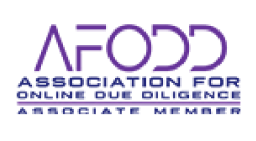Hybrid Work Model – As of 2021, Singapore has begun transitioning back to the physical workplace with most employees now dividing their time between the office and home. While it is unlikely that we will return to the pre-pandemic status quo, we imagine the workplace of the future will be a hybrid work model that leverages the best of both virtual and face-to-face experiences.
The benefits of working together in-person
In 2016, the Harvard Business Review pondered: If work is digital, why do we still go to the office? They found that even if we can work from anywhere, that does not mean we want to. According to the researchers, “We strive for places that allow us to share knowledge, to generate ideas, and to pool talents and perspectives.” That was five years ago.
Fast forward to the present day, and the majority of workers have been forced to work remotely for a substantial part of 2020. Even for those whose experience of remote work was positive, working virtually has obvious limitations.
Recent research from IMD Business School identified four management development areas that suffer in the absence of face-to-face interactions.
- Collaboration: building shared understandings, relationships, and trust.
- Innovation: getting creative ideas out of people’s brains, exploring the ways they fit together, and collectively engaging in learning processes to refine and realise them.
- Acculturation: creating a robust, shared company culture. This is an essential element of long-term organisational effectiveness as it builds mutual understanding and a sense of shared identity.
- Dedication: having a shared sense of purpose and feeling part of a community.
Driving engagement in a hybrid work model
Here are five ways leaders can build a hybrid work model for better engagement, productivity and motivation.
1. Schedule regular in-person meetings
There’s been lots of research into the value of face-to-face vs virtual meetings. While advancements in technology have improved things, having every call over video can be challenging. Advantages of in-person meetings include being able to communicate clearly and gauge body language. It’s also far easier to feel part of something, and to engage with your co-workers when you’re in the same room.
Make the most of days when the staff are present to hold in-person team meetings. Even if these are separated into Team A and Team B meetings on alternate days, followed up by an online meeting which captures everyone. Meetings with people physically present are essential to rebuilding a sense of camaraderie that may have suffered during remote work.
2. Make the effort to connect
After months of remote work and limited social contact, many people are keen to reconnect with those outside their home environment. Now more than ever, a little hello at the beginning of the day or a quick chat by the water cooler goes a long way. Creating a positive workplace atmosphere is crucial in terms of both workplace happiness and your team members’ productivity and energy levels, and that all starts with leaders setting a cheerful, welcoming and inclusive tone.
As you make friendly greetings a routine, you will find your team members begin mimicking your welcoming gesture to one another, increasing workplace connections. Building connections with colleagues ensures that employees feel part of something, and therefore more engaged and productive in their work.
3. Host engaging team building events
‘Teamwork makes the dream work.’ Recent research from Nulab, a collaborative software company, found that team-bonding activities improved creativity, productivity, and employee retention. In the current climate, having team building events where employees play together, laugh together, and solve problems together goes a long way to cultivate happiness and fulfillment.
There are many companies in Singapore and elsewhere that specialise in COVID-safe activities designed to bring teams together, foster creativity and have fun. Why not try an escape room challenge or a group cooking class? Bringing your team (or smaller subgroups) together for a fun activity will do wonders for team engagement and productivity.
4. Mix up your work routine
Sitting at a desk all day can dull enthusiasm and productivity. Now that restrictions on numbers have relaxed in some areas to allow for slightly larger groups, surprise your team by holding your next meeting outside or at their favourite lunch spot.
These days different company policies vary on employees gathering outside of the office, so be sure to check with HR as well as the latest government advisory around what’s allowed. But mixing up the office/WFH routine with a new location will likely make team members more energised, refreshed and engaged.
5. Keep up the two-way communication
Keep in mind that your staff will have a mixed range of feelings toward being back in the workplace. Extroverts and those whose work benefits from collaboration will likely be enthusiastic about a return to the office, while those whose duties don’t require as much interaction may have been quite happy with WFH indefinitely. People may also have anxieties regarding safety and how their company is managing those risks.
Regular two-way communication is essential to ensuring your staff are comfortable with all aspects of being back in the office, and leaders need to be empathetic toward the concerns of their team. As the situation is rapidly evolving, it’s also important to act on the latest government advisory and update your company’s response at regular intervals.
In summary, now is the time for business and HR leaders to get on the front foot of the hybrid work model and make the most of their people being back in the office. While digital and virtual channels may have sustained us through long periods of remote work, nothing replaces face-to-face interactions. Build the right hybrid work model and you’ll see your employee morale, engagement and productivity ‘zoom’.







